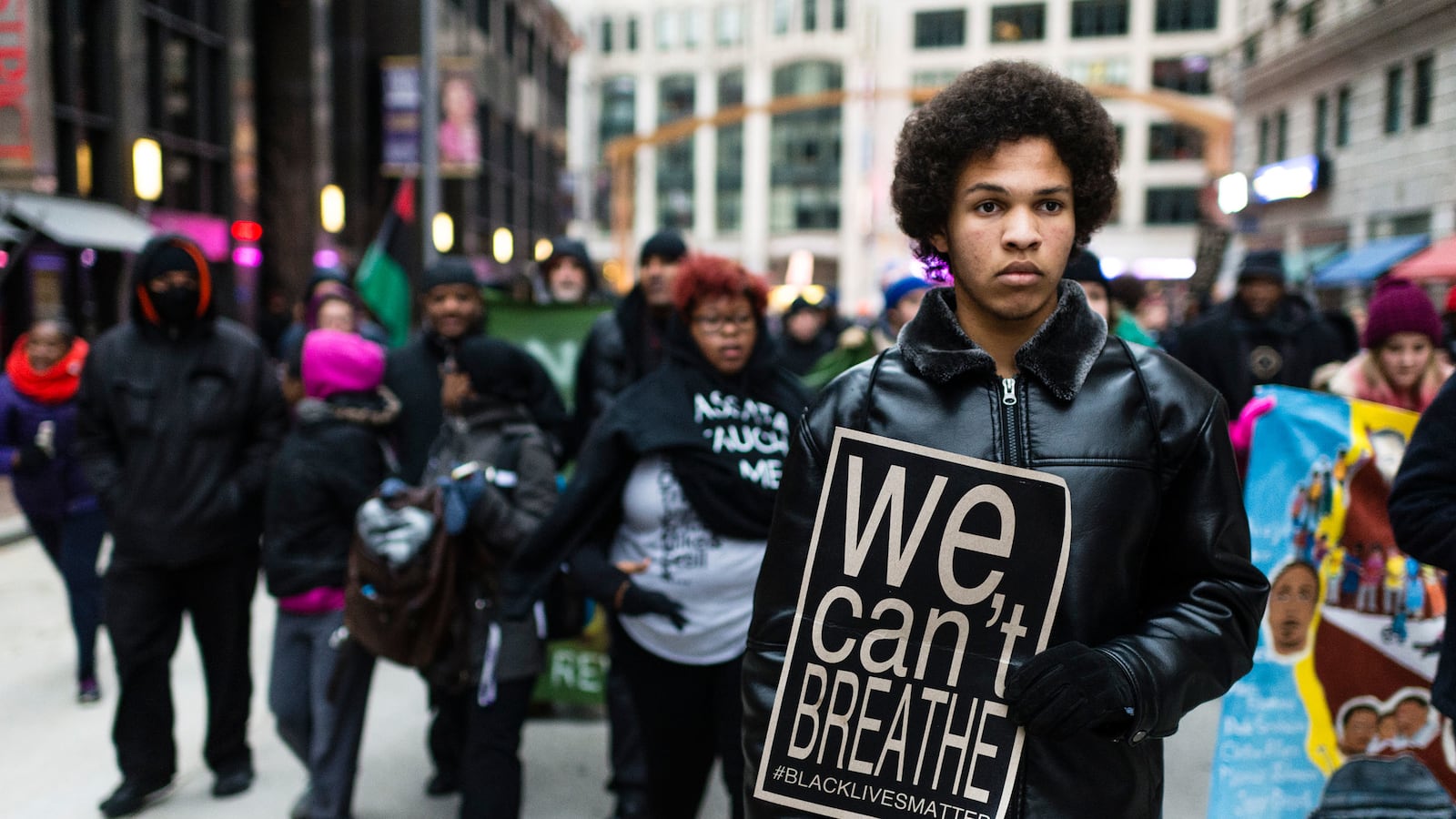Their names never appeared on a ballot, but two black boys dashed the re-election hopes of two district attorneys and continue to influence state contests in the Democratic presidential primary—from their graves.
Tamir Rice and Laquan McDonald were killed by police officers but, despite both incidences being captured on videotape, many believe justice was delayed and ultimately denied. How prosecutors chose to handle the ensuing investigations—one in Cleveland, the other in Chicago— sparked widespread demonstrations and likely sealed the fates of two elected officials in the March 15 primaries.
Anita Alvarez, state’s attorney for Cook County, Illinois, since 2008, and Cuyahoga County, Ohio, prosecutor Tim McGinty, who first took office in 2013, both lost handily to primary challengers. Many believe the election results should send a clear signal to prosecutors around the country, the vast majority of whom are re-elected with no meaningful opposition. Once in office, a district attorney can typically expect to retire from the job unless they decide to move on.
“It was a huge win for activists,” said Ben Wikler, the Washington director for MoveOn.org. “About 95 percent of prosecutors run for re-election unopposed.”
Notably, McGinty lost Tuesday’s primary against Democratic challenger Mike O’Malley by 10 points. Chicagoans, on the other hand, did more than turn the page. They threw the book at a district attorney who was targeted with the Twitter hashtag #ByeAnita. Alvarez was trounced by Chicago native Kim Foxx, 58 to 28 percent.
In a case that captured national headlines, McGinty refused to bring charges in the shooting death of Tamir Rice, a 12-year-old black boy. Despite compelling evidence that the officers involved falsified reports and violated departmental policy, McGinty took a full year to make the announcement and some believe he intentionally steered the grand jury away from issuing an indictment. At one point, McGinty publicly accused the Rice family of attempting to profit from Tamir’s death. Cleveland police officer Timothy Loehmann, who had been fired from a neighboring department after repeatedly failing training exercises, fatally shot Tamir—who had a toy gun—within two seconds of encountering him.
Meanwhile, in Chicago, District Attorney Alvarez faced the ire of community activists after she was suspected of helping delay the investigation into the death of Laquan McDonald. The teenager was shot in October 2014, but it took more than a year and a judge’s order to force the release of police dash camera video. The images, replayed in a near-constant loop on cable news networks, were shocking and accusations that the tape had been hidden for political purposes quickly mounted. McDonald, 17, who presented no immediate danger to the responding officers, was shot 16 times as he darted into a roadway blocked off by squad cars.
While Alvarez eventually charged officer Jason Van Dyke with first-degree murder, she was seen as part of a larger problem: Can prosecutors be trusted to rigorously investigate and bring charges against police officers who commit crimes while in uniform?
“The Alvarez result demonstrates that there will be accountability,” Wikler said. “Not only does the movement have moral power, it has political power.”
The fallout, however, did not end with locally elected officials.
The two remaining candidates for the Democratic presidential nomination—Hillary Clinton and Bernie Sanders—were at the top of both ballots. While Illinois proved to be a close contest, Clinton won Ohio comfortably. Some voters came chiefly to send home a prosecutor, but they also pulled the lever for a presidential candidate.
Sanders clearly benefitted from an uptick in turnout among younger voters in upstate Illinois—the site of recent protests at a Trump rally—and has increased his support with black voters in some states. But Clinton, who has bested the Vermont senator among older African Americans (especially women), walked away with wins in both states because of sheer depth and breadth of that support. Young black voters turned out in key districts, but their mothers, aunts, and grandmothers showed up too.
Just as it is a mistake to label every young black demonstrator a member of #BlackLivesMatter, it is equally wrong to assume that older voters are not taking their cues from what they see unfolding in the streets. They may not always agree with the method, but the cause of social justice is clearly a cross-generational unifier. News organizations tend to calculate BLM’s influence only in terms of its impact on millennials and frequently overlook how it may be driving behavioral patterns in other voting segments. Clearly older black women, the lion’s share of whom support Clinton, decided they’d had enough of McGinty and Alvarez.
Without question, the races in Ohio and Illinois demonstrated the political clout of #BlackLivesMatter and other progressive groups like MoveOn.org. Before Tuesday night, prognosticators openly groused that the movement would not be able to convert activism to actual ballots cast. Losses for Alvarez and McGinty not only disprove that theorem, but also now call into question how political power of activists is measured. Clearly, BLM’s impact was felt long before the ballot box opened.
“Both Democratic candidates speaking forcefully about social justice is a huge tribute to the extraordinary organization,” Wikler said. “It’s redefined the debate.”
Together with activists from around the country, BLM lifted the names of Laquan, Tamir and others who were victims of police violence into the national consciousness. The boys are more than hashtags. They embody the heart and soul of a powerful political movement, whose full influence has yet to be measured.
McGinty and Alvarez are likely just the beginning.
Updated 6 p.m. 3/17/2016 to relect that it was Kim Foxx who beat Anita Alvarez. We regret the errror.






